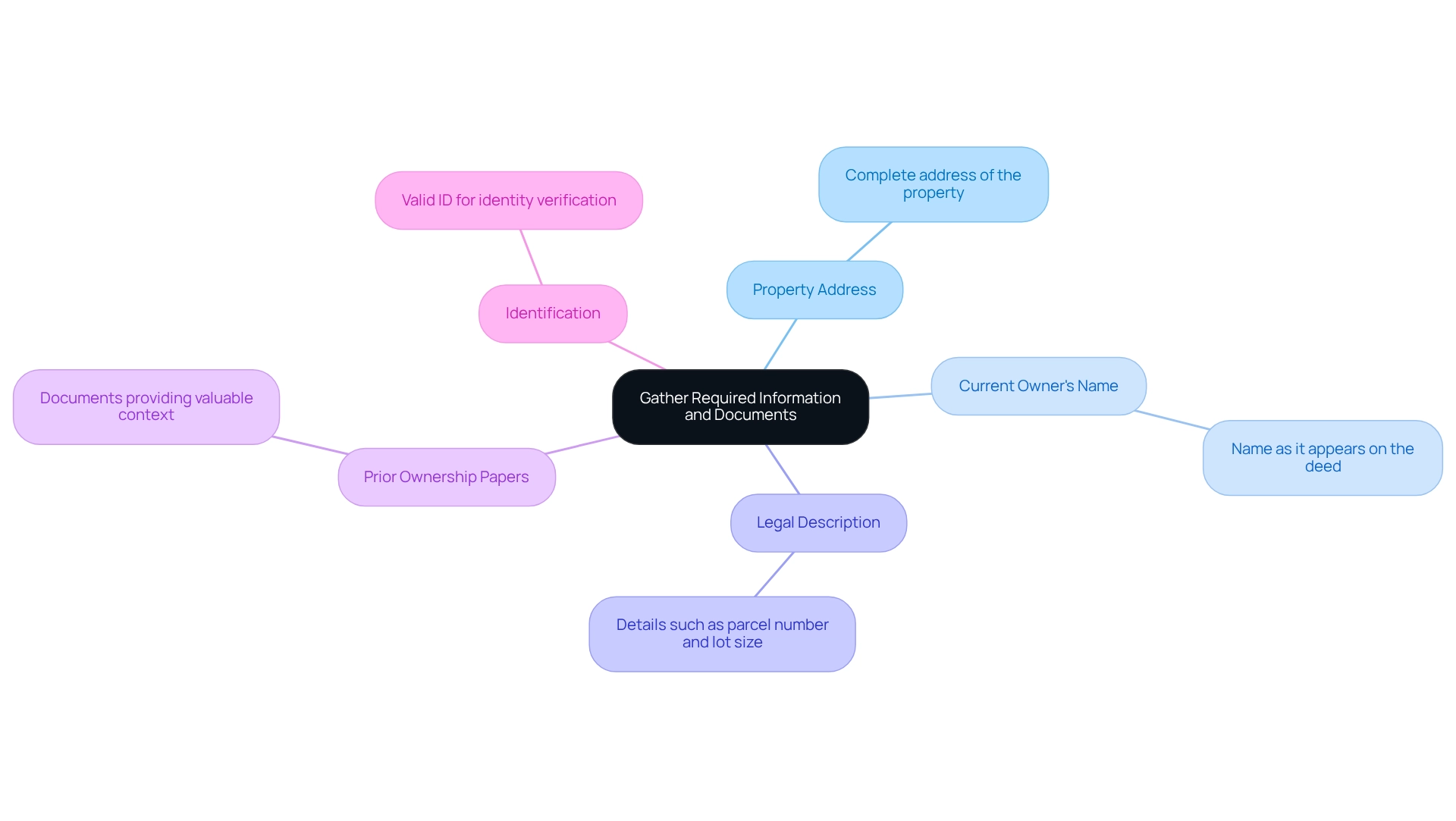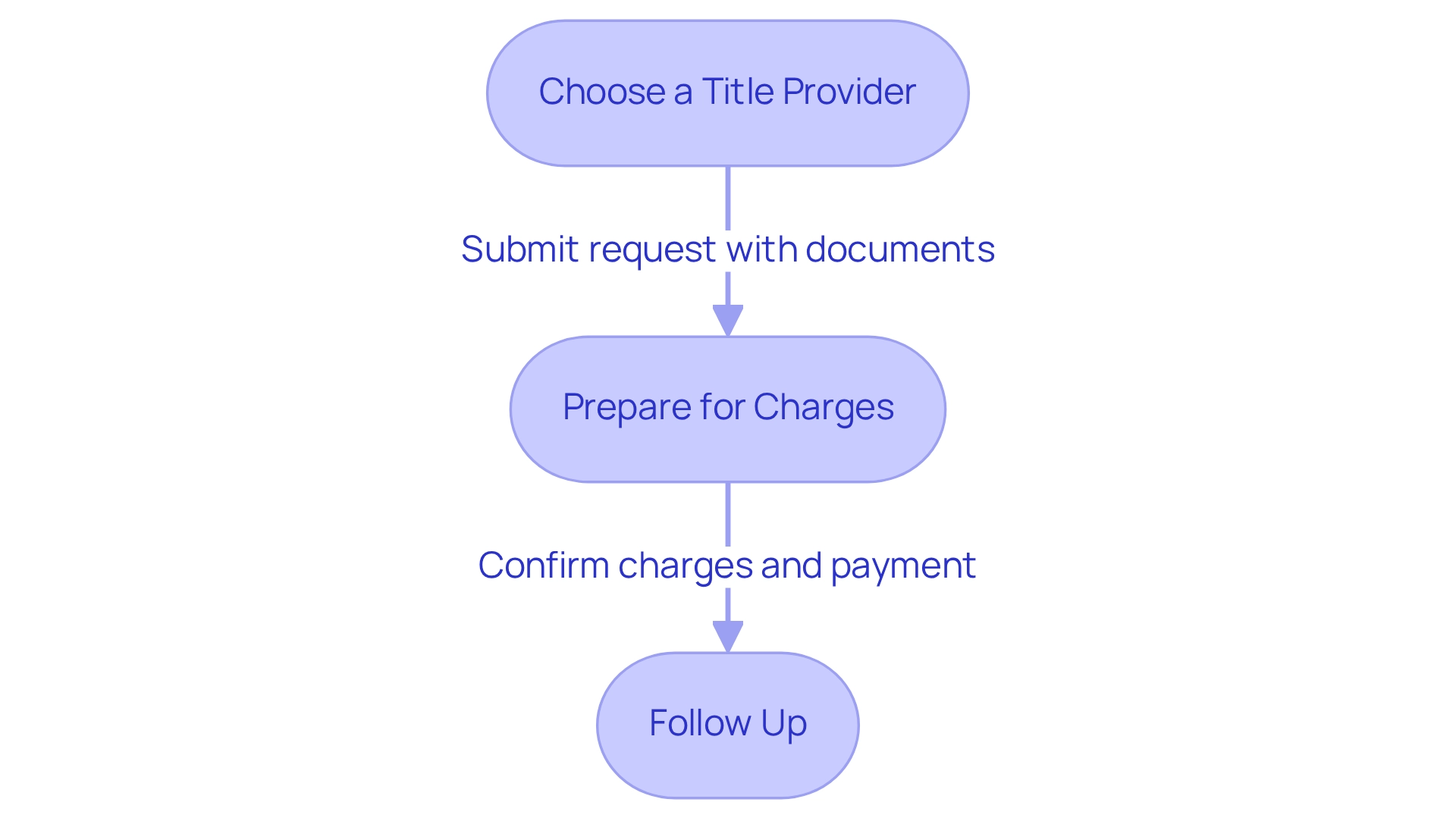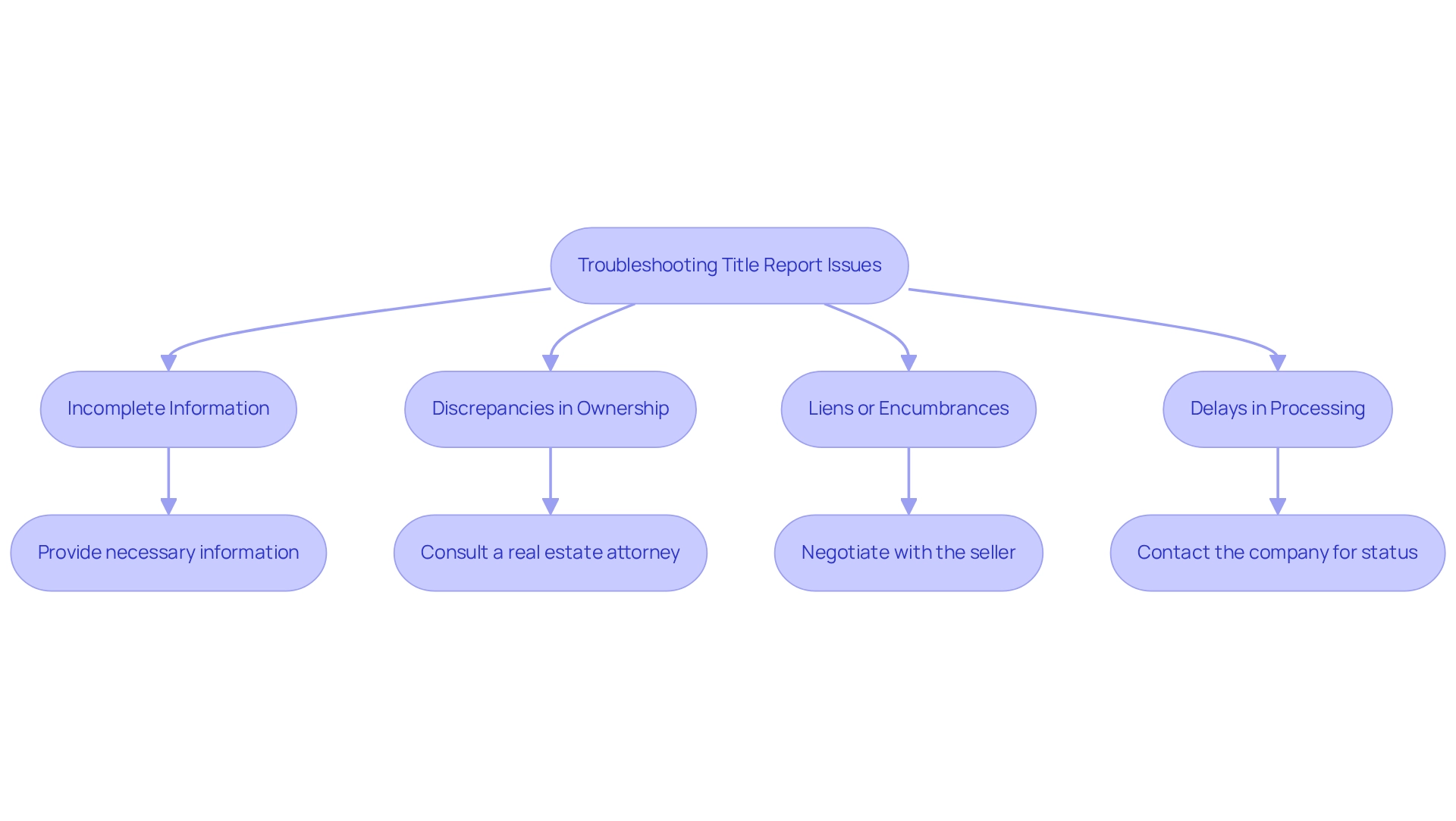Overview
To obtain a title report for a property, one must adhere to a structured process that encompasses:
- Understanding the report's purpose
- Gathering necessary documents
- Requesting the report from relevant authorities
- Troubleshooting common issues
This article outlines this essential process, emphasizing the significance of:
- Having accurate information readily available
- Selecting a reliable title provider
- Preparing to tackle potential challenges
By doing so, buyers can make informed decisions regarding property ownership, ensuring a smoother transaction and greater peace of mind.
Introduction
Navigating the complexities of real estate transactions can be daunting, particularly when it comes to understanding the legal intricacies involved. A title report emerges as a crucial tool in this landscape, offering a detailed overview of a property's legal status, ownership history, and any existing liens or encumbrances.
For buyers and real estate professionals alike, grasping the significance of this document is essential for making informed decisions and avoiding potential disputes. This article delves into the process of obtaining a title report, from gathering necessary documents to troubleshooting common issues. Consequently, stakeholders are well-equipped to navigate the real estate market with confidence.
Understand the Purpose of a Title Report
This analysis serves as a comprehensive record detailing the , encompassing its , any liens or encumbrances, and other relevant legal information. Understanding its purpose is crucial for anyone involved in , as it provides . This document functions as a , aiding buyers in . Furthermore, it is imperative for to verify that the property is devoid of legal complications before proceeding with a transaction.

Gather Required Information and Documents
To acquire a comprehensive , understanding is essential to gather specific details and materials related to the asset. This process is crucial for ensuring accuracy and reliability when learning how to get a for a property. The following elements are necessary:
- Property Address: The complete address of the property in question.
- Current Owner's Name: The name of the current property owner as it appears on the deed.
- Legal Description: Often found on the property deed or tax bill, this includes details such as the parcel number and lot size.
- Prior Ownership Papers: If accessible, any prior ownership documents can provide valuable context.
- Identification: A valid ID may be required to verify your identity when requesting [how to get a title report for a property](https://blog.parseai.co/4-steps-to-buy-land-and-title-services-software-effectively).
Having these documents prepared will streamline the process and ensure that you can provide all essential information to the relevant organization or authority.

Request the Title Report from Relevant Authorities
Once you have collected all required information and documents, the next step is to understand . Here’s how to do it:
- Choose a Title Provider: Select from various providers, such as Fidelity, First American, Stewart, or Old Republic, or contact your local county recorder's office. Consider utilizing and research automation to enhance your selection process by automating how to get a title report for a property and extracting critical information from document titles. Submit your request on how to get a title report for a property by providing the collected information and papers to the selected service. This can often be done online, via email, or in person, especially when learning how to get a title report for a property. With Parse AI’s , you can quickly annotate and organize your documents, ensuring a smooth submission.
- Be prepared to cover any necessary charges for the document assessment to learn how to get a title report for a property, as costs can differ based on the organization and the intricacy of the assessment. Using can help streamline this process and reduce the time spent on administrative tasks.
- Follow Up: After sending your request, check in with the organization to confirm that your request is being addressed and to inquire about how to get a title report for a property. Leverage Parse AI’s interactive labeling features to keep track of your requests and manage communications efficiently.

Troubleshoot Common Title Report Issues
When learning how to get a for a property, it is crucial to be aware of several that may arise. Understanding how to troubleshoot these challenges will facilitate a .
- Incomplete Information: Should the firm request additional details, promptly provide the necessary information to avoid delays in processing.
- Discrepancies in Ownership: In the event of inconsistencies in ownership records, it is advisable to consult a or the property firm for guidance on resolving these matters.
- Liens or Encumbrances: If the report reveals liens or encumbrances, may be required, or these issues must be addressed prior to proceeding with the purchase.
- Delays in Processing: If the document is taking longer than expected, it is prudent to to inquire about the status of your request and any potential problems causing the delay, particularly if you are learning how to get a for a property.
By being proactive and well-informed, you can effectively manage these common challenges, thereby ensuring a successful title report process.

Conclusion
Understanding the complexities surrounding title reports is essential for anyone engaged in real estate transactions. This article highlights the critical role that a title report plays in providing a clear legal overview of a property, including its ownership history and any existing liens or encumbrances. By grasping the purpose of this document, stakeholders can make informed decisions that protect their interests and reduce the risk of future disputes.
The process of obtaining a title report involves:
- Gathering necessary documents
- Selecting a reliable title company
- Submitting a well-prepared request
Being organized and thorough during this phase can streamline the process and minimize delays. Furthermore, awareness of common issues that may arise, such as incomplete information or ownership discrepancies, equips buyers and real estate professionals to navigate challenges effectively.
Ultimately, the importance of a title report cannot be overstated. It serves as a vital safeguard in real estate transactions, enabling stakeholders to move forward with confidence. By prioritizing due diligence and being proactive in addressing potential issues, one can ensure a smoother transaction process and secure their investment in the property market.
Frequently Asked Questions
What is the purpose of a title report?
The purpose of a title report is to provide a comprehensive record detailing the legal condition of a property, including its ownership history, any liens or encumbrances, and other relevant legal information.
Why is understanding the title report important for real estate transactions?
Understanding the title report is crucial for anyone involved in real estate transactions as it provides vital insights into the property's legal standing and serves as a safeguard against potential disputes regarding ownership.
How does a title report aid buyers in their decision-making?
A title report aids buyers in making informed decisions by revealing any legal complications associated with the property, allowing them to assess the risks before proceeding with a purchase.
What should real estate professionals verify regarding the title report?
Real estate professionals should verify that the property is devoid of legal complications before proceeding with a transaction, ensuring a smooth process for all parties involved.




